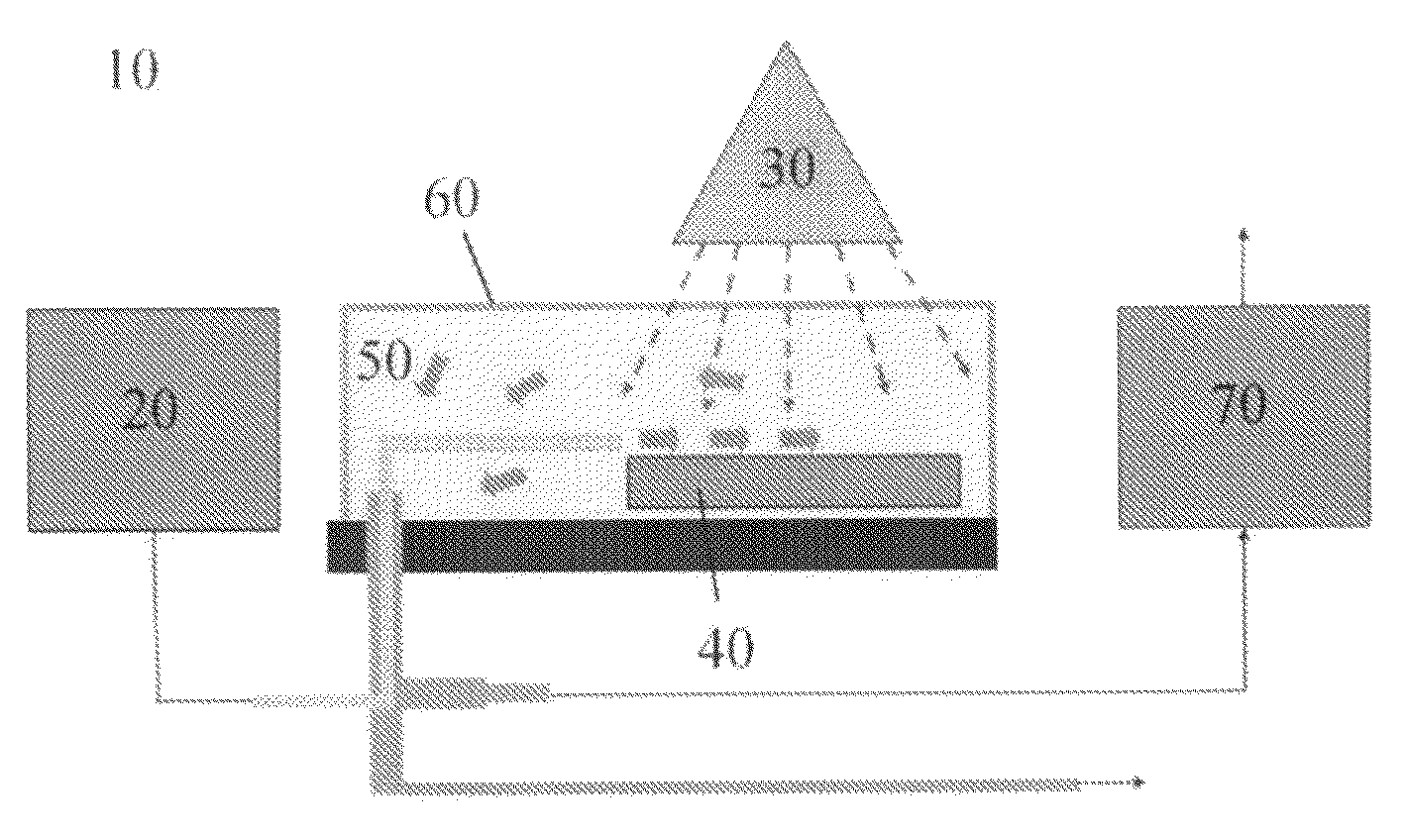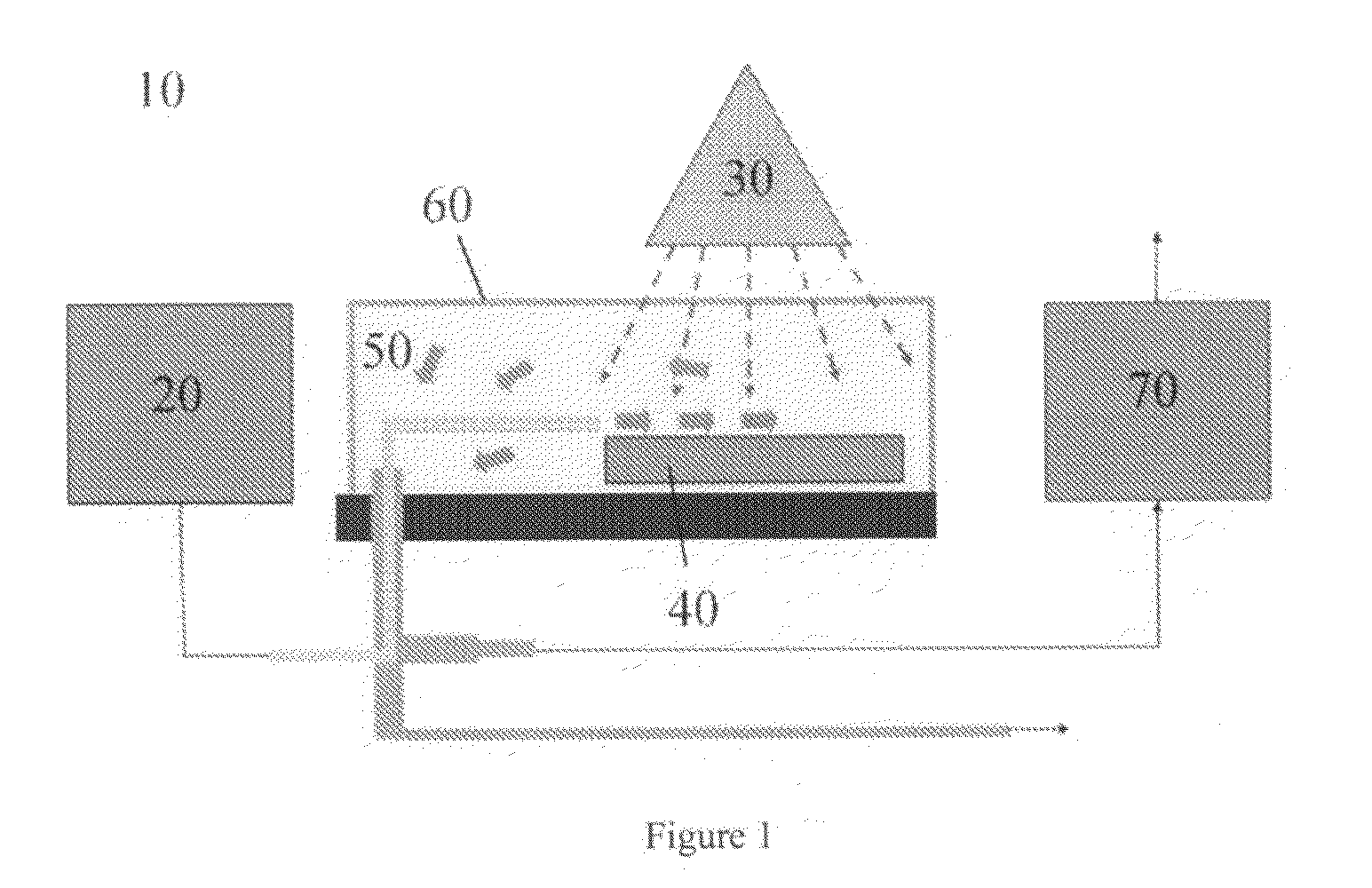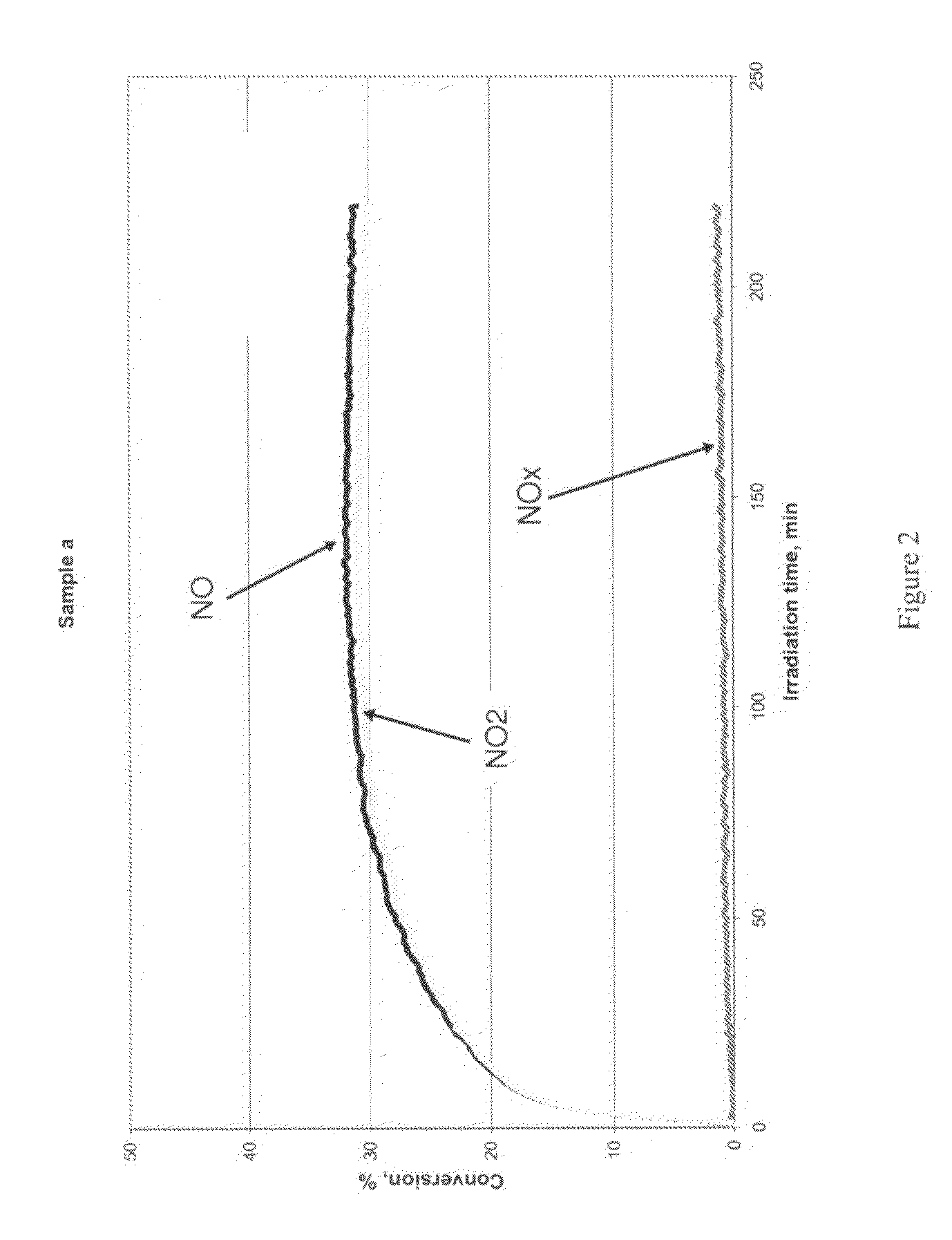Use of photocatalytically coated particles for decomposition of air pollutants
- Summary
- Abstract
- Description
- Claims
- Application Information
AI Technical Summary
Benefits of technology
Problems solved by technology
Method used
Image
Examples
example 1
[0052]The NO conversion under UV lamp of a photo-catalytic iron oxide sample (TiO2 23 wt.-% based on total pigment weight) was measured, under UV illumination, on the pigment itself and when included (6 wt.-% pigment based on cement weight) in a concrete matrix (Sample a). In addition, a concrete sample, (Sample b), was made with photo-catalytic cement (TX Aria white) and 6% Ferroxide 48. All concrete samples were prepared according to Method 2 above and tested after 3 months outdoor aging.
[0053]Results are reported in the following table:
converted % NOconverted % NO2at 180 minat 180 min% NO2 producedPigment66.445.468.4Sample a31.513.2Sample b30723.3
[0054]The data show that the cement containing photocatalytic iron oxide produces less NO2 than the reference photocatalytic cement commercially in use today.
[0055]FIG. 2 shows the conversion versus time of irradiation for sample a. As can be seen from the plot the conversion starts from 0 and increases in few minutes after switching the...
example 2
[0058]Four concrete samples were prepared as described in Method 1 and left in a humidity chamber at T=95° C. and 90% humidity (accelerated aging) for different length of time. The following samples were prepared:[0059]Sample 1: Photocatalytic cement, no pigment[0060]Sample 2: Photocatalytic cement, standard iron oxide yellow (3.8 wt.-% based on total cement weight)[0061]Sample 3: Standard cement, photocatalytic iron oxide 1 (45 wt.-% TiO2 based on total pigment weight), 6.8 wt.-% based on total cement weight[0062]Sample 4: Standard cement, photocatalytic iron oxide 2 (45 wt.-% TiO2 based on total pigment weight), 6.8 wt.-% based on total cement weight
[0063]Photocatalytic iron oxide 1 and 2 are materials prepared as described in patent application no. PCT / EP2006 / 068245 following two different preparation steps.
[0064]The photocatalytic conversion under UV light was measured before aging, after 96 h and after 192 h. The data are reported in FIGS. 3 and 4 and in the following tables:
co...
example 3
[0069]Two concrete samples were prepared as in Method 1 and irradiated under UV light:[0070]Sample a: Ferroxide 48.3% on cement[0071]Sample b: Photocatalytic iron oxide (TiO2 21 wt.-% based on total pigment weight,) 5 wt.-% based on total cement weight
[0072]As in the NO conversion test the samples were exposed to UV light in presence of NO. Fe(II) was determined on the extraction liquid after different lengths of time, wherein the extraction procedure was performed as follows: The concrete block was percolated with H2SO4 2 mM previously deoxygenated and exposed for 10 min to microwave at 375 W. The solution was filtered and Fe(II) was measured by the Absorbtion at a wavelength of 510 mu after o-phenanthroline addition. Data are plotted in the FIG. 7 showing that photodissolution of Fe(II) is evident only for the standard iron oxide (Ferroxide 48) under UV-NO condition but not for the photocatalytic iron oxide.
Soluble iron(II) μM / cm2Time minSample aSample b01.5 · 10−037.0 · 10−041902...
PUM
 Login to View More
Login to View More Abstract
Description
Claims
Application Information
 Login to View More
Login to View More - R&D
- Intellectual Property
- Life Sciences
- Materials
- Tech Scout
- Unparalleled Data Quality
- Higher Quality Content
- 60% Fewer Hallucinations
Browse by: Latest US Patents, China's latest patents, Technical Efficacy Thesaurus, Application Domain, Technology Topic, Popular Technical Reports.
© 2025 PatSnap. All rights reserved.Legal|Privacy policy|Modern Slavery Act Transparency Statement|Sitemap|About US| Contact US: help@patsnap.com



